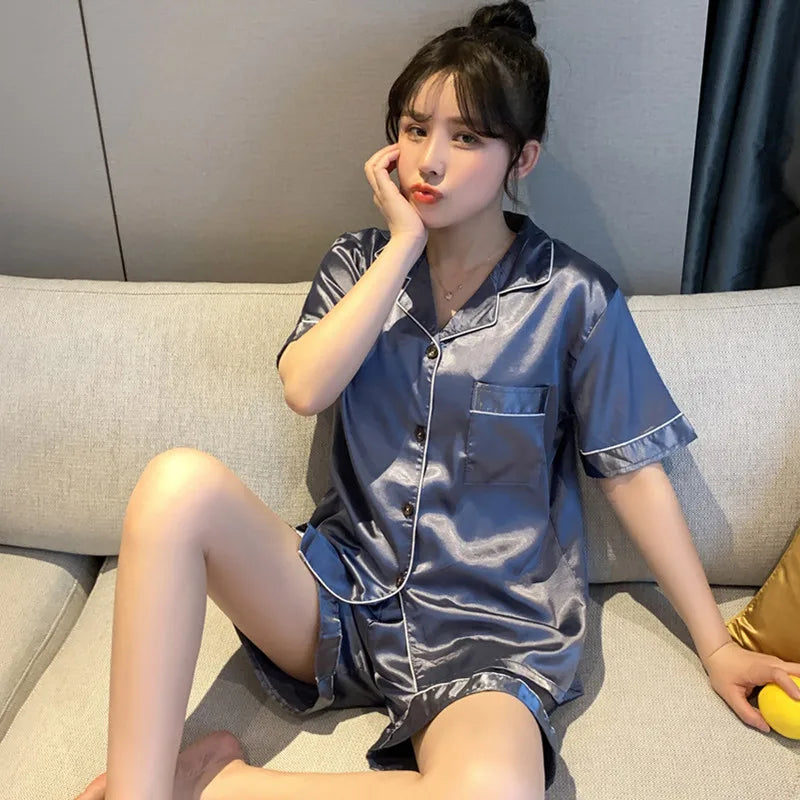Are You Supposed to Put a Onesie Under a Sleeper?
Table of Contents
- Introduction
- Understanding the Basics: What Are Onesies and Sleepers?
- Should You Layer a Onesie Under a Sleeper?
- The Benefits of Layering
- Choosing the Right Fabrics
- Best Practices for Dressing Your Baby for Sleep
- Conclusion
- FAQ
Introduction
Ever found yourself standing in your baby's nursery, pondering the perplexing question: "What do I layer under a sleeper?" You're not alone! The world of baby sleepwear can be a confusing one, especially with so many options available. One of the most common inquiries parents have is whether they should put a onesie under a sleeper. While it may seem like a simple question, the answer can vary based on factors like temperature, fabric, and personal preference.
In this blog post, we will delve into the nuances of baby sleepwear, focusing on the roles of onesies and sleepers. Together, we’ll explore the features of each garment, the benefits of layering, and the best practices for ensuring your little one sleeps comfortably and safely. By the end of this post, you’ll have a comprehensive understanding of how to dress your baby for sleep, making those nightly routines easier and more enjoyable.
We’ll cover a range of topics, including the differences between onesies and sleepers, the best fabrics for baby sleepwear, and expert recommendations on dressing your baby according to the season. Along the way, we will also highlight how Relaxed Nights embodies comfort and elegance in nightwear, ensuring every woman and baby feels beautiful and cozy.
So, let’s embark on this journey together to demystify baby sleepwear and find the perfect layering solution for your little one!
Understanding the Basics: What Are Onesies and Sleepers?
What Is a Onesie?
A onesie is a versatile, one-piece garment designed primarily for babies and toddlers. Often made from soft, breathable fabrics like cotton, it typically features short or long sleeves and snaps at the crotch for easy diaper changes. Onesies are often worn as standalone outfits or can be layered under other garments, making them a staple in any child's wardrobe.
Key Features of Onesies:
- Material: Soft, breathable fabrics like cotton or blends that provide comfort and regulate temperature.
- Versatility: Suitable for both daytime wear and bedtime, making it a practical choice for parents.
- Ease of Use: Snap closures make diaper changes quick and hassle-free, especially during nighttime.
What Is a Sleeper?
A sleeper, also known as a sleep sack or footed pajamas, is specifically designed for sleeping. This one-piece outfit typically features long sleeves and pants, providing full-body coverage to keep your baby warm and snug throughout the night. Sleepers often have built-in foot coverings, zippers, or buttons for easy access during nighttime diaper changes.
Key Features of Sleepers:
- Full-Body Coverage: Designed to keep babies warm without the use of blankets, making them safer for sleep.
- Warmth: Generally made from warmer materials like fleece or heavier cotton, ideal for cooler temperatures.
- Convenient Design: Many sleepers come with zippers or buttons that extend from the neck to the feet, allowing for easy changes.
The Purpose of Each Garment
While both onesies and sleepers serve the purpose of keeping babies comfortable, they cater to different needs. Onesies are best for casual wear and layering, while sleepers are tailored for sleep, providing extra warmth and security during the night. Understanding these distinctions will help you decide when and how to use each garment effectively.
Should You Layer a Onesie Under a Sleeper?
Factors to Consider
When deciding whether to put a onesie under a sleeper, several factors come into play. Here are some key considerations:
- Temperature: The ambient temperature plays a crucial role in determining how many layers your baby should wear. If it's particularly cold, layering a onesie under a sleeper can provide extra warmth. Conversely, on warmer nights, a sleeper alone may suffice.
- Fabric: The materials used in both garments are essential. Lightweight, breathable fabrics like organic cotton are excellent for warmer weather, while thicker fabrics like fleece are better suited for colder nights. Always ensure that both items are made from high-quality materials to maintain comfort.
- Personal Preference: Some parents prefer the added warmth and security of layering, while others may find it unnecessary. It’s important to trust your instincts and consider your baby's comfort.
Recommendations from Experts
Experts suggest that a onesie can be an excellent base layer under a sleeper, particularly for infants who may struggle to regulate their body temperature. During colder months, a long-sleeved onesie can help retain warmth, while a short-sleeved option is suitable for milder nights.
According to the American Academy of Pediatrics, it’s crucial to avoid overheating your baby during sleep. A good rule of thumb is to dress your baby in one more layer than you would wear yourself in the same environment.
Examples of Layering
- Cold Weather: For colder nights, consider dressing your baby in a long-sleeved onesie beneath a thicker fleece sleeper. This combination keeps your little one warm and cozy without the need for loose blankets.
- Mild Weather: On milder nights, a short-sleeved onesie under a lightweight cotton sleeper can provide a comfortable balance, allowing for breathability while still offering some warmth.
The Benefits of Layering
Enhanced Comfort
Layering a onesie under a sleeper can provide additional comfort for your baby, particularly during colder nights. The snug fit of a onesie can help regulate body temperature, making sleep more restful.
Increased Safety
Sleepers are designed to eliminate the need for loose blankets, which can pose suffocation risks. By layering a onesie, you can ensure that your baby stays warm without compromising safety.
Versatility
Using a onesie as a base layer allows for flexibility in your baby's sleepwear options. With various styles and fabrics available, you can easily adapt to changing temperatures and individual comfort needs.
Choosing the Right Fabrics
Importance of Fabric Choice
The fabric of both the onesie and sleeper can significantly affect your baby's comfort. Here’s what to look for:
- Breathability: Fabrics like cotton and bamboo are excellent for temperature regulation, allowing airflow to prevent overheating.
- Softness: Always opt for materials that are gentle against your baby's sensitive skin, avoiding any fabrics that may cause irritation.
- Durability: Ensure that the fabrics are durable enough to withstand frequent washing, as baby garments tend to get soiled quickly.
Recommended Fabrics
- Cotton: Soft, breathable, and easy to care for, cotton is a popular choice for both onesies and sleepers.
- Bamboo: Naturally hypoallergenic and moisture-wicking, bamboo fabric helps keep your baby comfortable in various climates.
- Fleece: Ideal for colder weather, fleece offers warmth and softness, making it a great option for sleepers.
Best Practices for Dressing Your Baby for Sleep
Monitoring Room Temperature
The ideal room temperature for a baby's sleep space is generally between 68-72°F (20-22°C). Ensure that the room is comfortable, and adjust your baby's clothing accordingly. If you find the room temperature fluctuating, consider using a room thermometer to keep track.
Checking for Signs of Overheating
Pay attention to your baby's cues. Signs of overheating may include sweating, flushed cheeks, or rapid breathing. If you notice any of these signs, it’s essential to adjust their clothing to prevent discomfort.
Regularly Assessing Comfort Levels
As your baby grows, their sleepwear needs may change. Regularly assess whether your current layering practices continue to offer comfort and warmth. Don’t hesitate to adjust based on your child’s preferences and seasonal changes.
Conclusion
In conclusion, deciding whether to put a onesie under a sleeper is influenced by various factors, including temperature, fabric choice, and personal preference. Layering can enhance your child's comfort and safety during sleep, especially during colder nights. By understanding the unique features of both garments and the benefits of layering, you can ensure that your baby sleeps soundly and safely.
At Relaxed Nights, we believe that every night should be an experience of comfort and elegance. Our commitment to premium quality nightwear extends to our collection of baby sleepwear, ensuring that both mothers and their little ones can enjoy luxurious sleep solutions that make bedtime a joy.
Now that you have the knowledge to make informed decisions about your baby's sleepwear, we encourage you to explore our range of beautiful night dresses and sleepwear. Together, let's embrace comfort and elegance in every night's routine.
FAQ
Is it safe for a baby to sleep in a onesie?
Yes, as long as the onesie is made from breathable fabric and fits properly without being too tight, it is safe for a baby to sleep in.
Can a onesie be used under a sleep sack?
Yes, a onesie can be layered under a sleep sack for added warmth and comfort, especially during colder seasons.
How do I know if my baby is too hot in a sleeper?
Signs of overheating include sweating, flushed skin, or rapid breathing. If you observe these signs, consider adjusting your baby's clothing.
What is the best fabric for a sleeper?
The best fabrics for a sleeper are soft, breathable materials like cotton or bamboo, which help regulate temperature and keep your baby comfortable.
Should I use a blanket with a sleeper?
Sleepers are designed to provide warmth without the need for a blanket. It's recommended to avoid blankets in the crib to reduce the risk of suffocation.



